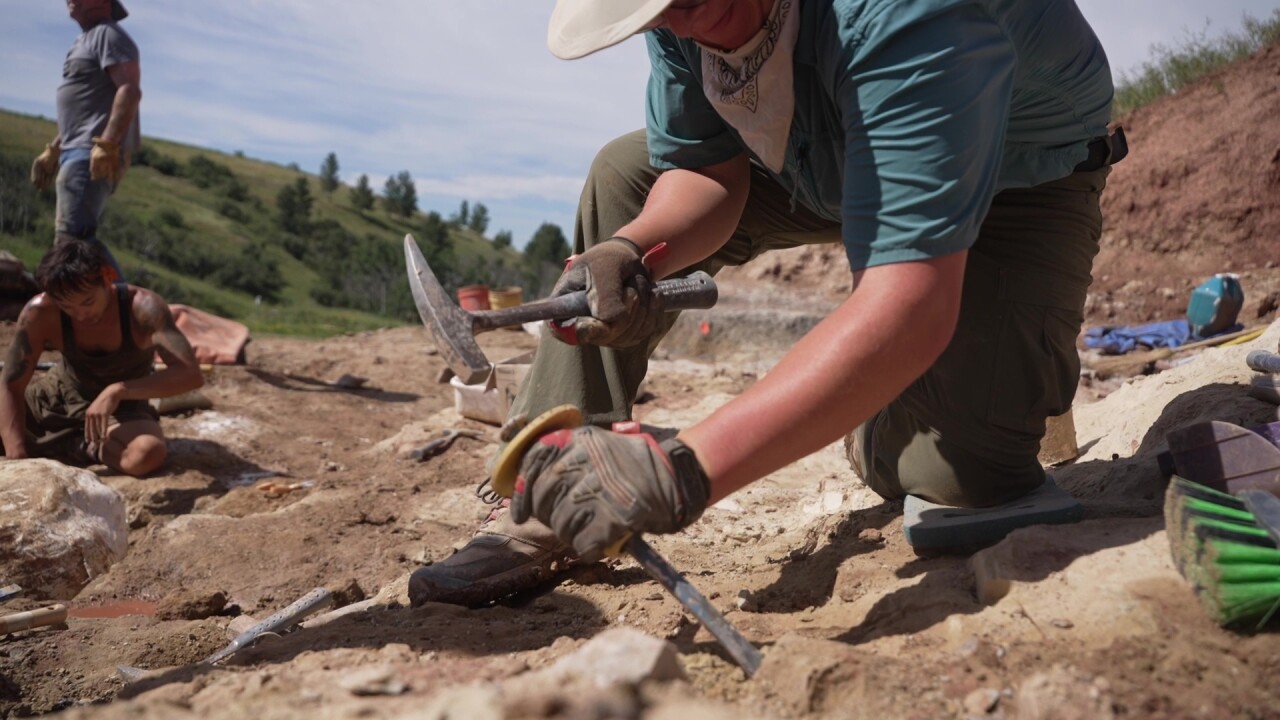A rancher near Lewistown made a surprising discovery that could help scientists learn more about a mysterious time in dinosaur history. In 2017, Kevin Conners discovered part of a dinosaur tailbone on his property, and contacted the Museum of the Rockies to excavate and donate the bones.
Aneesa Coomer reports from Fergus County - watch:
Conners says, “It was big and white and really stood out. As I picked it up, I knew it was a dinosaur bone. It brings out the ten-year-old in a lot of us that have always wanted to do something like that.”
For the past few summers, researchers from the museum have been working to excavate the site. They believe the bones belong to a large plant-eating dinosaur that lived more than 120 million years ago during the Early Cretaceous period. While they don’t yet know the exact species, the discovery is already considered important.
Dr. John Scannella, the John R. Horner Curator of Palentology at the Musuem of the Rockies explains, “Not much is known about dinosaurs from this area of Montana near Lewistown. This dinosaur potentially could fill in a big gap in our understanding of not only what this area was like over 100 million years ago, but also about that part of the dinosaur family tree.”
Paleontologists say the dinosaur may be similar to an Iguanodon, a large herbivore known from Europe. They’ve already uncovered parts of the tail, hip, and leg, and are now working on what they believe are parts of the ribcage. The bones are being carefully wrapped in plaster and burlap before being moved.
Excavating bones from this time period is rare in Montana. Most dinosaur fossils found in the state come from the later part of the Cretaceous period.
Dr. Haviv Averhami, a field paleontologist at the site, says that’s what makes this dig so special. He says, “We know a lot about what happened at the very end, during the late Cretaceous. But that middle section, the early Cretaceous, it's still very mysterious. This is the origin of when those plant-eating dinosaurs first started attaining that really large body size. That's why this site is really cool, and that's why this dinosaur, which is the first dinosaur that's been discovered from this formation, is really, really important.”

The team hopes more of the skeleton is still buried deeper in the hillside. Back at the Museum of the Rockies, fossil preparers are already working on bones found in past summers from the same site, cleaning and studying them in a controlled lab setting.
For students like Christian Noble, an undergraduate student at Montana State University, the project is also a personal milestone. He explains, “This is like my first official dig I’ve ever been on. It has been an amazing experience so far. Being out in the field, finding the bones, prepping them—it’s kind of a childhood dream of mine.”
The team continues carefully tunneling, wrapping, and lifting out the fossils in sections, hoping each new piece will help them learn more about this dinosaur, and the time it lived. Scanella adds, “We’re hoping that what we find in the rock moving forward will help answer some of those questions.”



